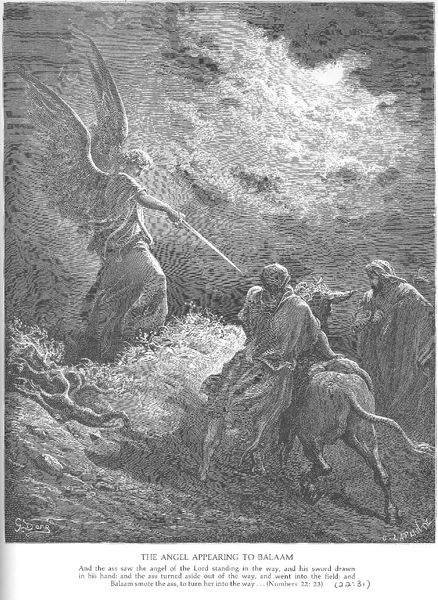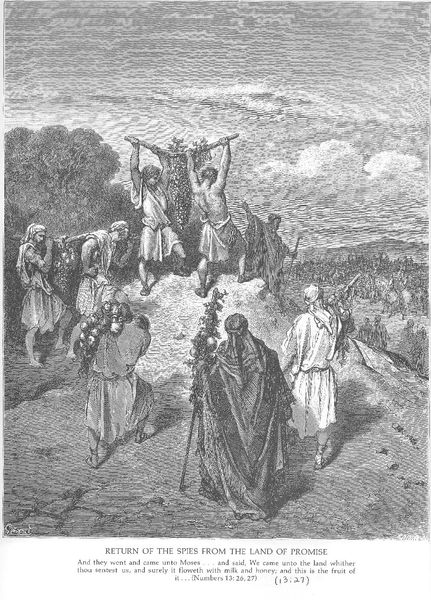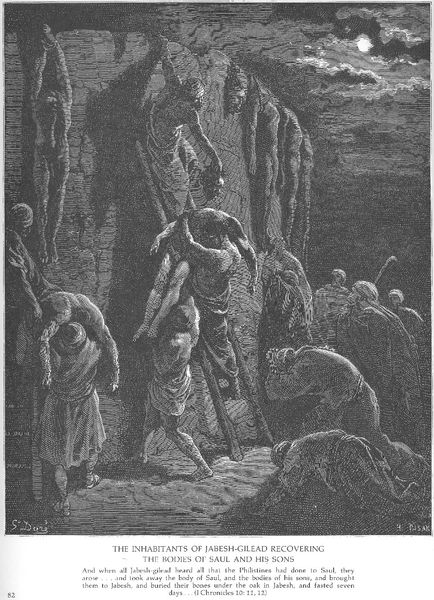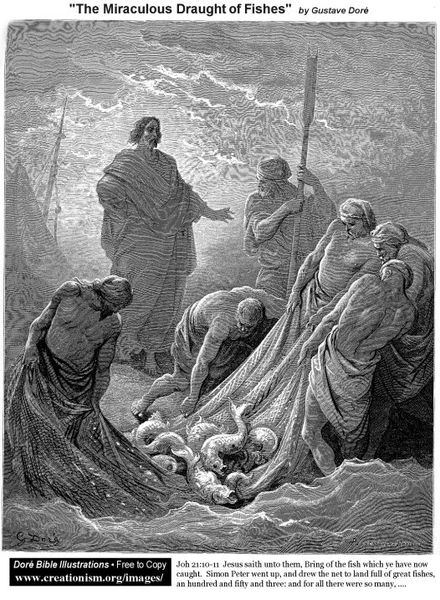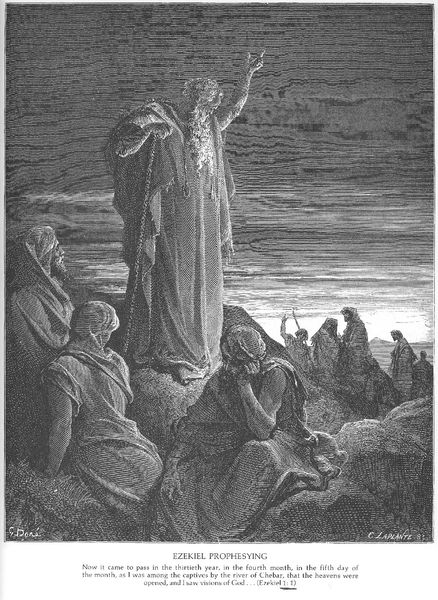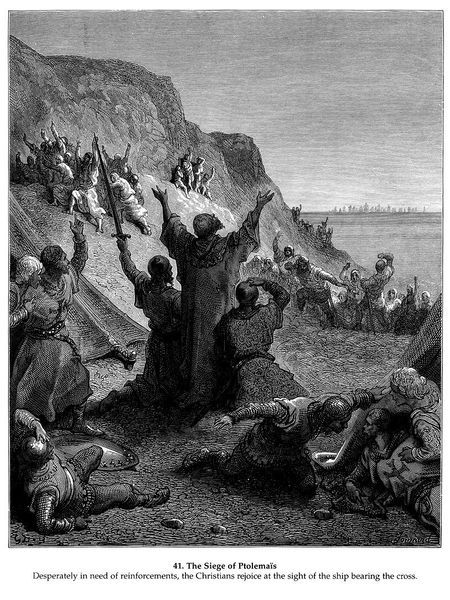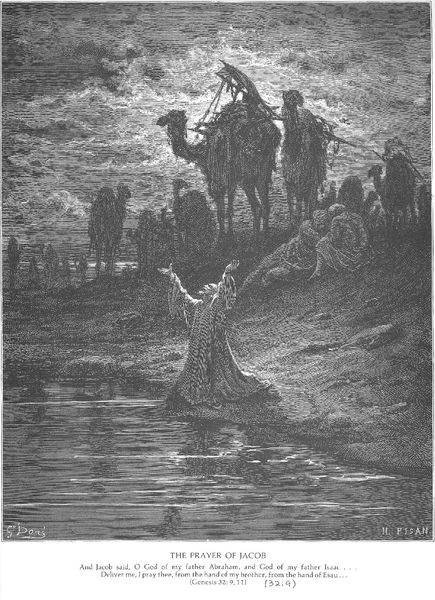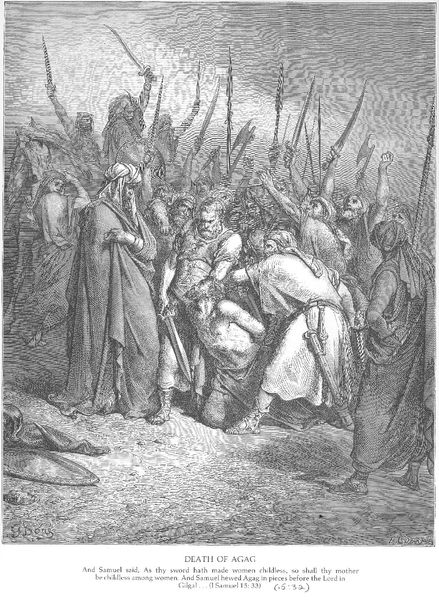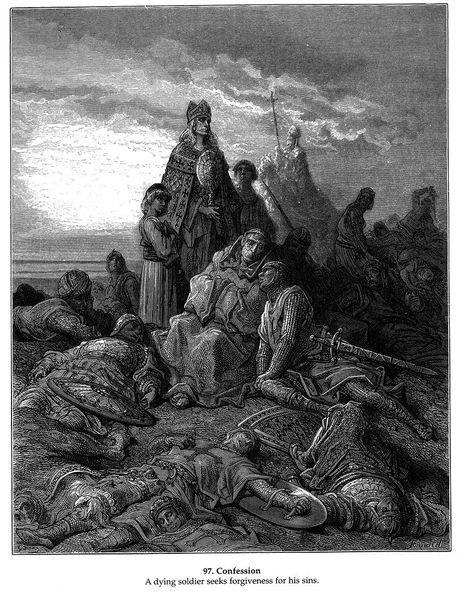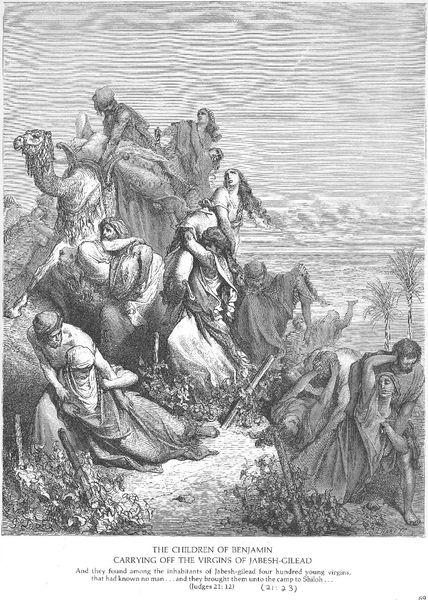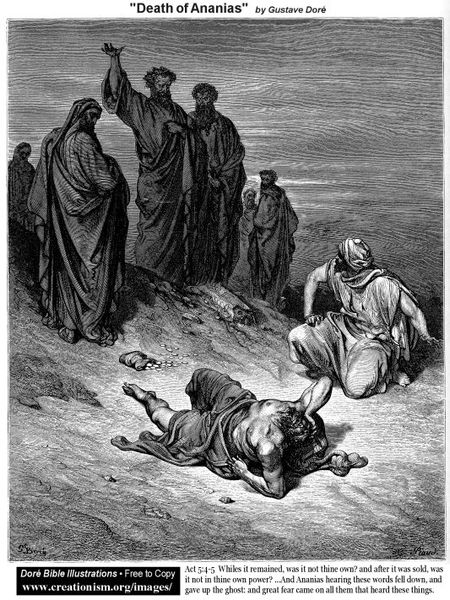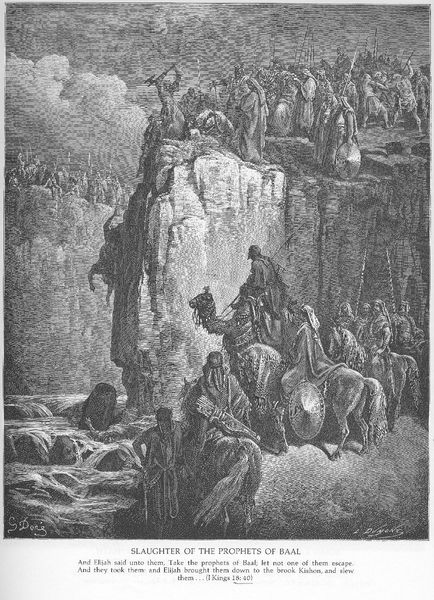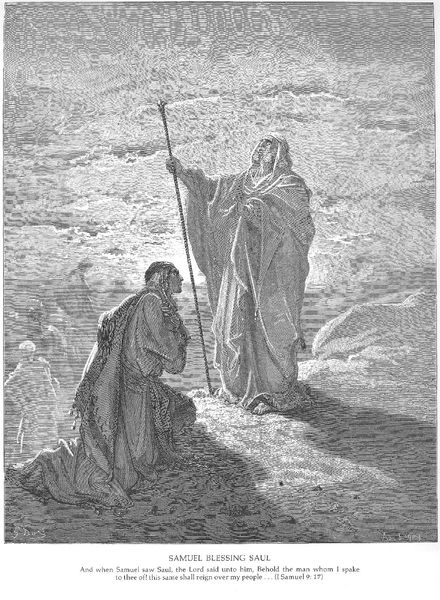
drawing, photography, engraving
#
drawing
#
narrative-art
#
death
#
photography
#
romanticism
#
christianity
#
history-painting
#
engraving
Copyright: Public domain
Curator: This is Gustave Doré’s engraving, "The Death of Ahab." Editor: It’s incredibly dramatic. The sheer number of figures, the implied violence—it’s all rather overwhelming. I’m struck by how actively Doré’s uses the hatching to define form and movement, it makes it feel like the whole image is roiling. Curator: Absolutely. Doré was a master of dramatic composition. Here, he illustrates a pivotal scene from the Old Testament, the death of King Ahab. This imagery, like much of his work, taps into themes of mortality, divine judgment, and the consequences of earthly power. Consider the broader social context; illustrated Bibles like these shaped public perceptions of morality and faith. Editor: And look at how the medium contributes to that reading. The sharp lines of the engraving, reproducible on a mass scale, speak to a dissemination of moral guidance. It makes one consider how the material process aided its societal impact. Curator: Exactly. Doré's choice of engraving wasn't merely artistic; it was a calculated decision for accessibility and wide distribution within 19th-century European society, where such visual interpretations held significant cultural sway. He became incredibly famous from that association. Editor: It is a perfect example of romanticism meeting industry. Doré exploits the reproductive capabilities inherent in engraving to disseminate what are very emotionally charged scenes on a vast scale. Notice, for instance, how the sun cuts through the image? It is illuminating the chaos beneath it. Curator: Yes, the interplay of light and shadow definitely amplifies the emotional intensity. And think about how the distribution of such images impacted perceptions of religious stories, influencing moral and ethical standards among the masses. His contribution to how biblical history and events was massive! Editor: One could also read the broken ground as the disruption of the battle that awaits. I see now it’s more than an image; it is a cultural object deeply embedded in history. Curator: Indeed, a powerful intersection of art, industry, and belief. Editor: Well, I've gained a richer understanding of its place in cultural history. Thanks for pointing out his distribution model.
Comments
No comments
Be the first to comment and join the conversation on the ultimate creative platform.
